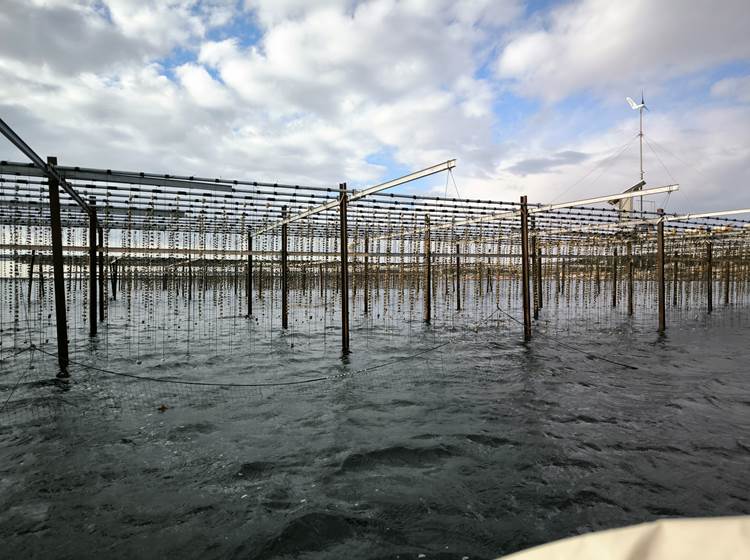Thau Archipelago: Bouzigues, Mèze, Marseillan, Balaruc

image
The Thau lagoon is the largest and deepest (4.5m on average and up to 10m) of the Languedoc-Roussillon lagoons.
A true inland sea, the Thau lagoon is separated from the Mediterranean only by a thin strip of sand, the lido.
The Thau lagoon is a natural environment without equivalent in Europe. It has an exceptional ecological diversity allowing more than 400 plant species and 100 animal species to thrive, including clams, sea snails, sea urchins, sea bream, mullet and sea bass (known as sea bass in the Atlantic).
Shellfish are the main resource of the Thau lagoon. 2,800 shellfish farms spread across 800 farms ensure the breeding of Bouzigues oysters and mussels.
The Thau lagoon (in Occitan : Estanh de Taur ), also called the Thau lagoon or Thau basin , is a lagoon ofbrackish water in the south of France and the largest body of water in the Occitanie region . It has an area of approximately 7,500 hectares and an average depth of five meters, the deepest point being the source of the Vise, also called the Bisse hole, which reaches a depth of 32 m. The name " pond ", used to designate the lagoon, comes from the literal translation of the Occitan term estanh . Benefiting from a particular and rich biodiversity , the lagoon is particularly known for its colonies of speckled seahorses 1, 2 .
Its size and depths, which distinguish it from other lagoons in the region, are explained by the geomorphology of the area; it is the syncline of a fold whose anticline is the Gardiole mountain, to the North-East.
The lagoon is connected to the Mediterranean Sea by streams at Marseillan (the Pisse Saumes) and at Sète .
Geography
[ edit | [edit code ]
Situation.
The Thau lagoon is a lagoon separated from the Gulf of Lion by a strip of coastal sand linking the Agde volcano to Mont Saint-Clair in Sète . It extends to the east by the Eaux-Blanches ponds and the Ingril de Frontignan pond, now partially filled in. To the west, there is the Bagnas pond and marsh , owned by the Conservatoire du littoral and a protected ornithological reserve.
Onglous 3 lighthouse at the mouth of the Canal du Midi in the Thau lagoon.
At the place called "les Onglous", in the commune of Marseillan , the Canal du Midi flows into the Thau lagoon, which connects the lagoon to the port of Sète and the Mediterranean Sea. The Canal du Rhône à Sète connects it to the Rhône from the Peyrade district, in the commune of Frontignan.


